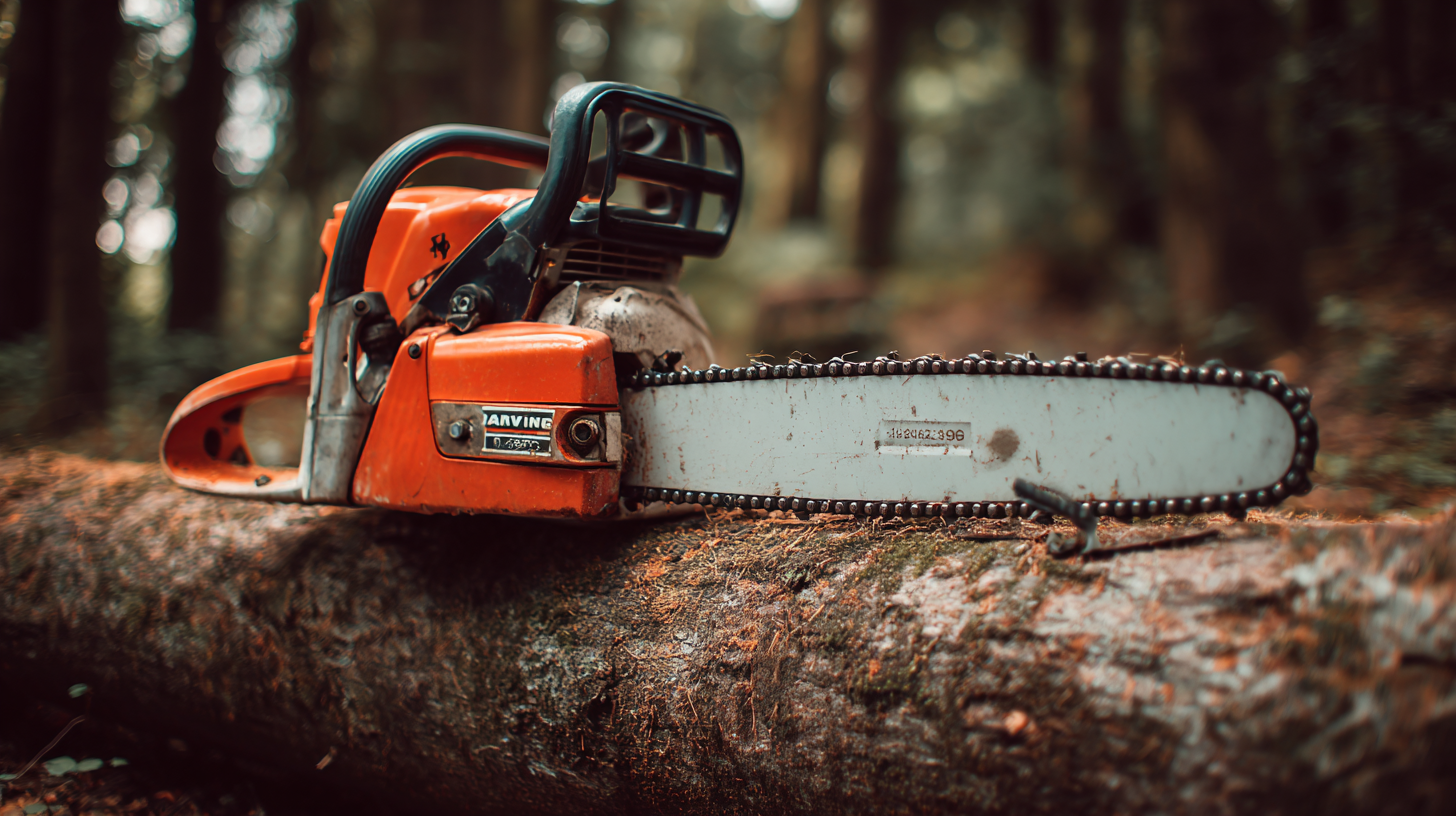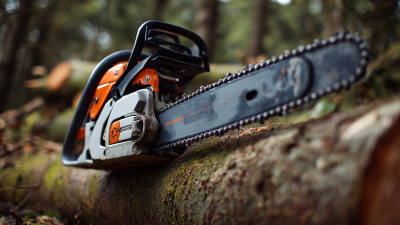How to Maintain Your Chain Saw for Optimal Performance
Maintaining your chain saw is crucial for ensuring it operates at its best, providing you with the efficiency and reliability you need for your cutting tasks. A well-maintained chain saw not only enhances its performance but also extends its lifespan, allowing you to tackle a wide range of projects with confidence. From regular cleaning and sharpening of the chain to checking the fuel and oil levels, every aspect of maintenance plays a significant role in optimizing the performance of your chain saw. In this guide, we will explore essential maintenance practices, tips, and techniques to keep your chain saw in top condition, helping you achieve cleaner cuts and improved safety during your wood-cutting endeavors. Whether you are a seasoned professional or a novice user, understanding how to properly care for your chain saw is key to unlocking its full potential.

Choosing the Right Chain Saw Oil for Your Equipment
Choosing the right chain saw oil is crucial for maintaining your equipment's performance and prolonging its lifespan. Unlike standard oils, chainsaw bar and chain oil is specifically designed to reduce friction and create a protective layer between the chain and the bar, which prevents overheating and wear. When selecting oil, look for options that offer high-viscosity for enhanced stickiness, ensuring that the oil adheres to the chain during operations.
Tips: Always check your chainsaw’s manual for the manufacturer's recommended oil type. Regularly topping up the bar oil before each use will help avoid potential damage. Additionally, using quality oil not only keeps your chainsaw running smoothly but also enhances cutting efficiency.
When using battery-operated chainsaws, proper lubrication becomes even more essential, as these tools are often designed for easy, efficient operation with minimal maintenance. Keeping the chain well-lubricated allows for optimal cutting power, making your equipment reliable for various tasks, from pruning branches to cutting firewood. Consistently maintaining your chainsaw oil levels will ensure that you always have a dependable tool ready when you need it most.
Chain Saw Oil Types and Their Viscosity Ratings
This bar chart depicts the viscosity ratings of different types of chain saw oils, which is crucial for optimal performance and maintenance of your chain saw.
Inspecting and Cleaning Your Chain Saw Regularly
Regular inspection and cleaning of your chain saw is crucial for maintaining its optimal performance. According to a report from the American National Standards Institute (ANSI), proper maintenance can extend the life of a chain saw by up to 50%. This not only saves money on repairs or replacements but also ensures safety during operation.
Start your routine by checking the chain tension and sharpness; dull chains can reduce cutting efficiency by up to 30%, as highlighted by data from the International Society of Arboriculture. Additionally, ensure that the air filter is clean to promote efficient airflow, which can improve engine performance and reduce emissions. Regularly clearing dust and debris from the chain saw body and bar will also help prevent overheating, a common issue that can lead to engine failure.
Moreover, cleaning the chain and bar after each use is essential. A study by the National Institute for Occupational Safety and Health found that maintaining a clean chain saw can decrease the likelihood of kickback incidents, which are a significant cause of injuries reported in the logging industry. By committing to these regular inspection and cleaning practices, you not only enhance your chain saw's performance but also significantly improve your safety and productivity.
How to Maintain Your Chain Saw for Optimal Performance - Inspecting and Cleaning Your Chain Saw Regularly
| Maintenance Task | Frequency | Details |
|---|---|---|
| Inspect the Chain Tension | Before Each Use | Ensure proper tension to prevent damage or accidents. |
| Clean the Air Filter | Every 10 Uses | Remove dust and debris for optimal engine performance. |
| Sharpen the Chain | After 3-5 Uses | A sharp chain cuts easier and reduces strain on the motor. |
| Inspect the Bar and Chain | Every Use | Check for wear and tear; replace if damaged. |
| Clean the Fuel Tank | Every Month | Remove old fuel and debris to prevent engine issues. |
| Check for Loose Screws and Bolts | Every 5 Uses | Ensure all parts are secure to prevent malfunction. |
Sharpening Your Chain: Techniques for a Clean Cut
Sharpening your chainsaw chain is crucial for ensuring a clean cut and optimal performance. To begin, gather the necessary tools: a round file that matches the gauge of your chain, a flat file for depth gauges, and a depth gauge tool. Start by securing the chainsaw firmly, either in a vise or by using the brake, to prevent any movements while sharpening.
Begin sharpening by filing each cutter at the correct angle, typically around 30 degrees. Move the file in one direction, ensuring consistent pressure and even strokes. The goal is to create a sharp edge that allows for efficient cutting through wood. After sharpening all the cutters, check the depth gauges, which set the height of the cutters. These should be filed down if they are too high, ensuring that the cutters can engage the wood effectively without dragging. Regularly checking and maintaining the sharpness of the chain will not only extend its lifespan but also enhance your cutting efficiency, leading to cleaner, smoother cuts every time.

Checking and Adjusting the Chain Tension
When discussing chain saw maintenance, particularly the chain tension, it's crucial to highlight the role of the rear guide wheel in enhancing efficiency. Many professionals have adopted modified rear guide wheels with oversized designs, which are believed to optimize performance by improving the chain's tracking. These larger wheels can provide a smoother operation, thereby reducing friction and wear on the chain, ultimately leading to longer service life and better cutting performance.
While the belief has been that adequate lubrication of the bearings is essential for the functioning of the guide wheels, the introduction of ceramic bearings has added another layer of sophistication. These premium bearings reduce resistance and provide greater durability. However, the size of the guide wheel shouldn't be overlooked; it impacts the overall dynamics of the chain saw. In combining larger guide wheels with advanced bearing technology, users can experience significant improvements in efficiency and reliability during operation, making it a worthwhile consideration for those looking to enhance their chain saw performance.

Replacing Worn Parts to Extend Chain Saw Lifespan
To ensure your chain saw performs optimally and lasts longer, regular replacement of worn parts is crucial. The most commonly worn components include the chain, bar, and spark plug. A dull or damaged chain can not only hinder cutting efficiency but also put additional strain on the saw, which may lead to more severe issues. Regularly inspecting the chain for signs of wear, such as missing teeth or excessive stretching, allows for timely replacement, ensuring smooth operation and improved cutting performance.
Another important aspect to consider is the guide bar. Over time, the bar may develop uneven wear or grooves, which can affect the chain's movement and lead to a less efficient cutting experience. If you notice any significant wear on the guide bar, replacing it is essential. Additionally, checking the spark plug for wear and replacing it as needed can enhance the chain saw's ignition performance. Keeping these key components in top condition will not only elevate your chain saw's performance but will also significantly extend its overall lifespan.
Related Posts
-

5 Compelling Reasons Why Chain Saws Are Essential for Efficient Tree Maintenance
-

The Complete Handbook for Choosing the Perfect Hand Held Chain Saw
-

10 Reliable Reasons Why China Chainsaws Dominate the Global Market
-

The Future of Outdoor Power Tools with Ms880 Chainsaw Innovation
-

7 Best Gasoline Chain Saw Features That Will Revolutionize Your Cutting Experience
-

7 Essential Tips to Maximize the Performance of Your 40.2cc Gasoline Chain Saw




